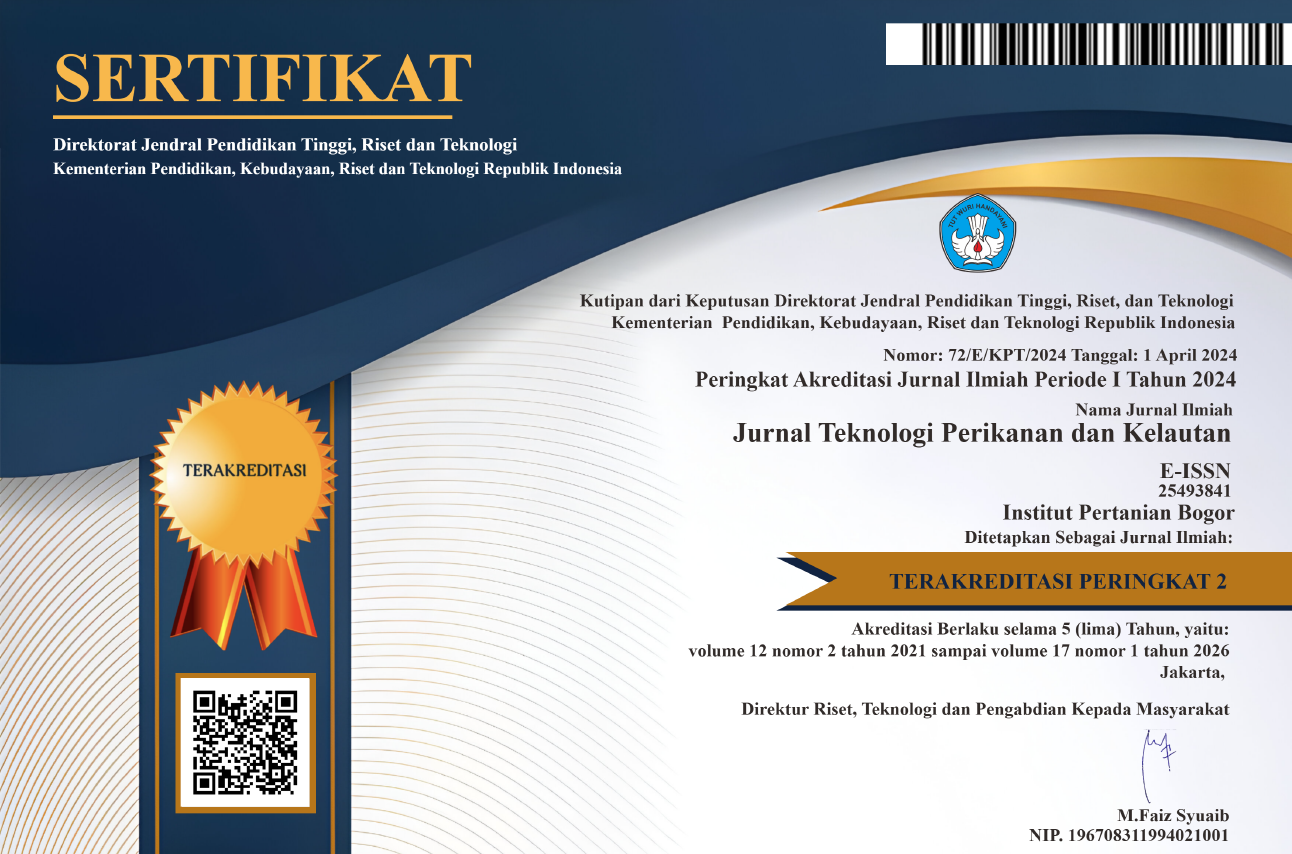PENGGUNAAN ELEKTRODA TEMBAGA DAN SENG DENGAN ELEKTROLIT AIR LAUT UNTUK SUMBER ENERGI LAMPU LED-DIP
Abstract
Dual in package light emitting diode (LED-DIP) is low energy lamp used by fisherman to attract and concentrate fish. LED-DIP requires low voltage and electric current, so it can use battery as energy source. The battery alternative is seawater battery. The objectives of this study were determining the performance of seawater battery, measuring the declining rate of light intensity, counting the corrosion of seawater battery electrode after using, and measuring the shrinkage on the foam insulator after using. The method used was laboratory experiment. The voltage (V) and current (mA) measurement were conducted simultaneously through light intensity measurement for 3 times. It was conducted with 2 hours and 12 hours duration. The voltage and current, and declining rate of light intensity in 2 hours were recorded every 10 minutes, and in 12 hours were recorded every 60 minutes. The corrosion of seawater battery electrode was calculated by photo analysis, while the shrinkage of foam insulator was measured based on the initial thickness of foam and in the last research. This research was conducted at Flum Tank Laboratory, IPB. The results showed the seawater battery generated electric energy turned on the green LED-DIP lamp of 5 mm for 12 hours with low voltage as much as 2.525 V/130 mA, the declining rate of light intensity of LED-DIP was higher than the declining rate of the voltage and current. Based on the measurements, seawater battery could be used as environmentally friendly alternative energy as energy source of LED-DIP as fish attractor lamp in liftnet fishing.
Copyright (c) 2020 Nofrizal Hayadi Saputra

This work is licensed under a Creative Commons Attribution-NonCommercial-ShareAlike 4.0 International License.





















